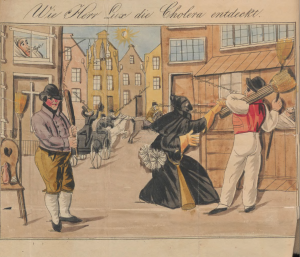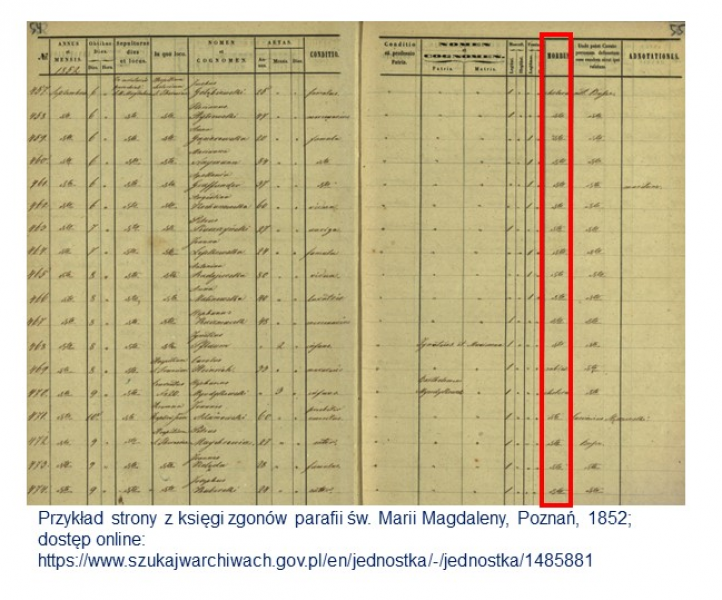Grażyna Liczbińska. 2021. Spatial and Social Inequalities in the Face of Death. Pilot Research on Cholera Epidemics in Poznań of the Second Half of the 19th Century. Historical Social Research Supplement 33: 37–53. 10.12759/hsr.suppl.33.2021.37-53.
In Poznań, in the first half of the 19th century, cholera epidemics broke out three times: in 1831, 1837, and 1848. Despite previous experiences with cholera epidemics, Poznań did not avoid the next ones: in 1852, 1855, 1866, and 1873. The havoc and dynamics of the cholera epidemics were influenced by many factors, among which an important role was played by population density, hygiene, and lack of access to clean water intake, and all of them were additionally strengthened by high temperatures. The problem of spatial and social stratification of mortality from cholera in Poznań has not been elaborated in more detail.
The study aimed to investigate whether spatial and social inequalities in Poznań, translating into differences in access to sanitary infrastructure, clean water intake, and generally, ecological conditions and standards of living, resulted in a varied probability of dying from cholera. The work used individual data entries on deaths from death books of selected Poznań parishes of Catholic and Protestant denominations for 1850–1874. In total, there were used 16,285 individual pieces of information on deceased: the date of death, sex, age at death, cause of death, profession, religion, and place of residence (quarter of residence). The results demonstrated that cholera death rates were a result of many factors, that were strongly interlinked. The profession was to some extent related to the quarter of residence or religion, whereas religion was related to the nationality, and sex of the deceased. Additionally, there was a large migration of people from outside the city and movement between quarters (trade, work, service, etc.), etc. That is why living in privileged quarters did not guarantee the lack of morbidity and protection from death due to cholera and the other way around.
This work deepened knowledge about epidemiology in historical Poznań. It pointed out the complexity of the relationship between various factors of socioeconomic and ecological nature, including climatological ones, and infectious diseases in city districts that differed in terms of quality and living standards. These findings underscore the need to account for ecological factors when evaluating the probability of death due to infectious diseases in urban spaces.




